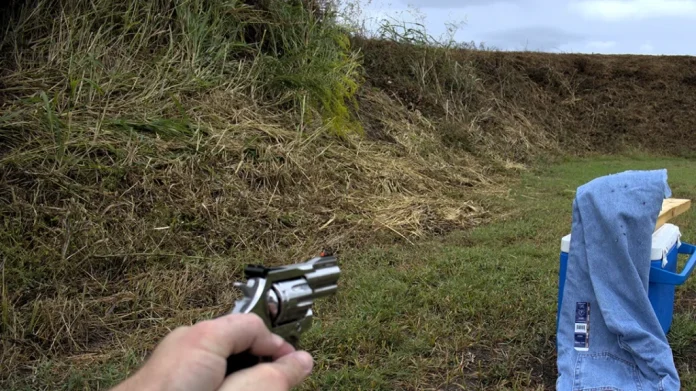[[{“value”:”
Thank you for reading this post, don't forget to follow and signup for notifications!
This post was originally published on this site.
The .22 LR is one of the all-time great cartridges. Chambered in everything from pocket pistols to precision rifles for more than a century, the little round’s worldwide appeal shows no signs of slowing. It’s legal in more places than many larger cartridges, it lets you build very lightweight platforms (perfect for training or survival kits), and the low recoil and reduced noise are nice extras.
Where the .22 gets controversial is when people consider it for self-defense. It’s smaller and less powerful than centerfire pistol cartridges, yet its low recoil and abundant availability lead many people to rely on it when life or limb are on the line. So, if a .22 is what you have (or choose), what defensive bullets actually work? A growing number of defensive-oriented .22 loads have appeared in recent years alongside a host of older, traditional options. We tested several to see how they stack up.
.22 LR Self-Defense — Setting Expectations
Variety is both a blessing and a curse with the .22 LR. After more than 130 years of production there are countless firearms and ammunition types to choose from. Federal estimates put annual .22 production at more than 4.3 billion rounds. And they’re not all the same. There are subsonic, standard-velocity, high-velocity, and “hyper”-velocity loads, with different bullet weights and profiles for different tasks.
Advertisement — Continue Reading Below
To keep this test realistic for most current users, we focused on handgun-relevant loads: common ammo plus newer defensive-oriented rounds. That gives a practical look at what you can expect if you opt for a .22 handgun for concealed carry.
Test Protocol
Our primary medium was calibrated 10% Clear Ballistics gelatin, fronted with four layers of denim to simulate a through-arm shot into a chest cavity wearing heavy clothing. For a baseline we used the FBI’s 12–18-inch penetration guideline as an acceptable window in gelatin. To evaluate intermediate-barrier performance, we also shot each load through a pine 2×6 from 10 feet.
All velocity readings were taken over a Caldwell chronograph from six feet. The test handgun was a Colt King Cobra 2-inch revolver.
Advertisement — Continue Reading Below
Ying & Yang: Federal Punch & Winchester Silvertip
The .22 LR has a long history in personal protection. Rifle-grade rounds like the CCI Mini-Mag and CCI Stinger helped make that argument stronger. But rounds specifically developed for defense are relatively new.
Federal Punch (29-gr flat point)
Federal’s Punch uses a 29-grain plated lead flat-point driven for penetration. The flat nose resists deflection better than round-nose bullets when striking bone — an important consideration with .22s, which are notorious for deflecting off bone and changing wound channels. Federal rates the Punch at about 1,050 fps from a 2-inch barrel.
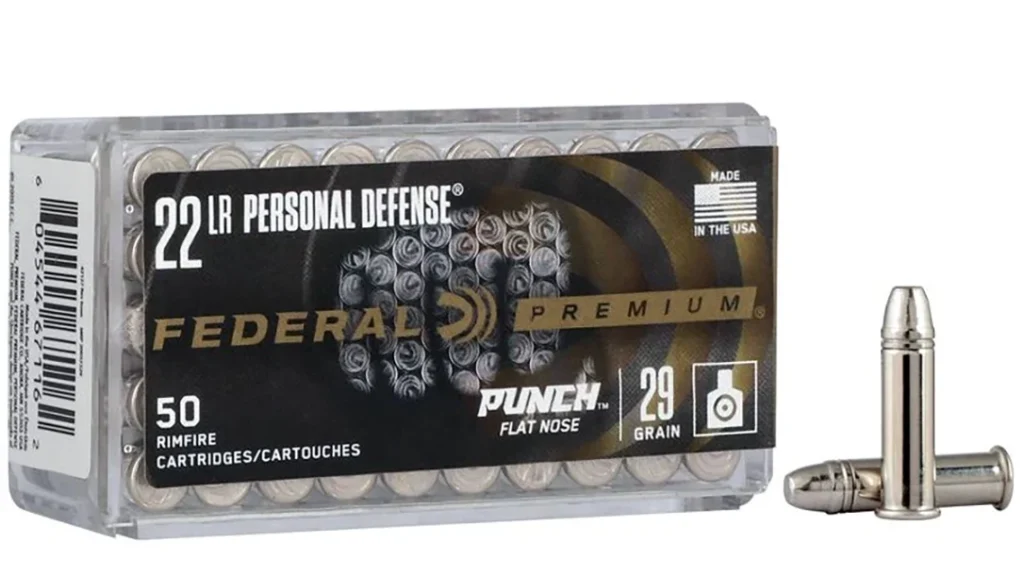
Advertisement — Continue Reading Below
In our test the Punch averaged 1,235 fps from the Colt (extreme spread: 33 fps). In gelatin the Punch produced straight .22-caliber wound channels with a consistent ½-inch “puckering” seen between the 2- and 6-inch marks. An indication of rapid energy transfer early on. One shot stopped at 15 inches, the other at 13½ inches. The bullet did not tumble.
Winchester Silvertip (37-gr segmented hollow point)
Winchester’s Silvertip is a truncated-nose hollow point designed to break apart into segments and create secondary wound channels while the base continues deeper. It’s intended to cause more incapacitating damage but, as with larger calibers, greater fragmentation typically reduces penetration.
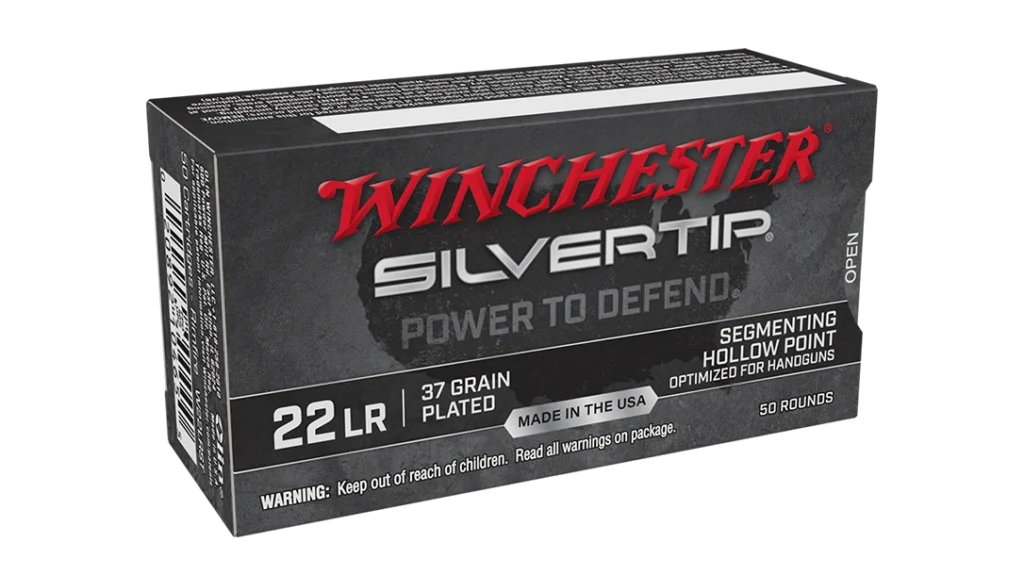
Advertisement — Continue Reading Below
The Silvertip averaged 1,069 fps (extreme spread: 33 fps) in our test. One Silvertip fragmented after about 2 inches of gel, producing three petals that spread roughly 1½ inches before the base carried on to stop at 12 inches (mushroomed to ~.25 cal). The second lost petals at about 8 inches and the base stopped at 10¾ inches.
Old & New School: CCI Uppercut & CCI Stinger
CCI Uppercut (32-gr jacketed, segmented HP)
Introduced in 2023, the Uppercut is a 32-grain jacketed bullet with a partly segmented hollow cavity intended for controlled expansion and reliable feeding. CCI advertises it at ~950 fps in longer barrels; in our short 2-inch test gun the Uppercut averaged 1,073 fps (extreme spread: 69 fps).
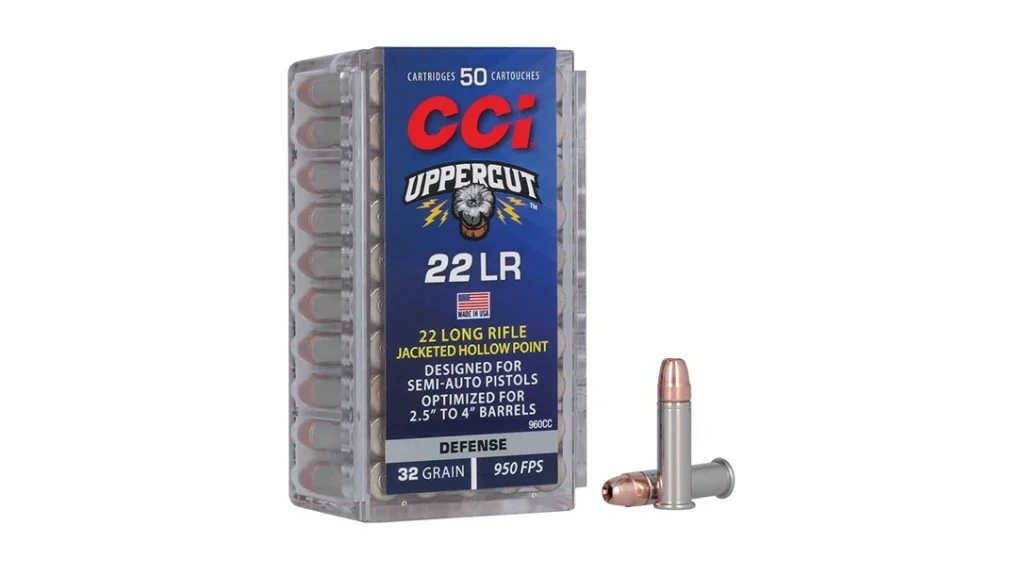
Advertisement — Continue Reading Below
In gelatin the Uppercut performed modestly: two rounds produced faint puckering around 2–4 inches and otherwise acted like “icepick” wounds, penetrating to about 10½ and 11¾ inches. Both recovered bullets were found base-first, indicating tumbling. In short barrels the Uppercut’s expansion cavity and increased drag seem to limit deep penetration.
CCI Stinger (32-gr high-velocity)
The Stinger is a plain-lead 32-grain bullet with a copper wash and a long, nickel-plated case; it’s historically a high-velocity varmint load (advertised muzzle velocity up to ~1,640 fps from rifle barrels). In our 2-inch revolver it averaged 1,123 fps but had a large extreme spread (148 fps) and produced significant muzzle blast and flash.
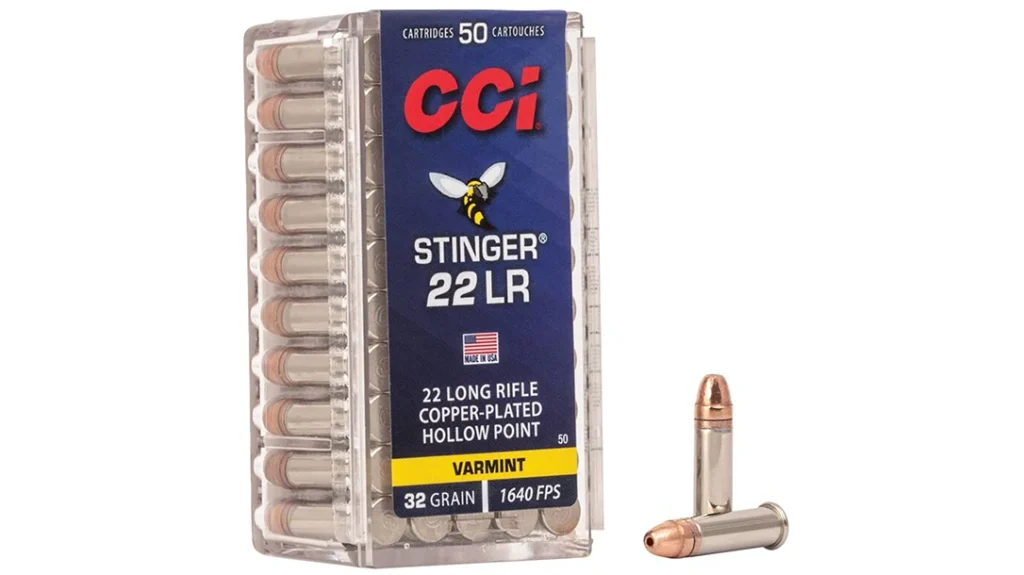
Advertisement — Continue Reading Below
Despite shorter-barrel losses, the Stinger performed well in gelatin: one round stopped at 15 inches, the other at 14¾ inches. One recovered base-forward, the other nose-first.
Barrier Test: 2×6 Pine
We fired all four rounds through a pine 2×6 at 10 feet to see how they handle hard intermediate barriers. All four penetrated the board — a bit surprising compared with some smaller rimfire and pocket-pistol rounds we’ve tested previously.
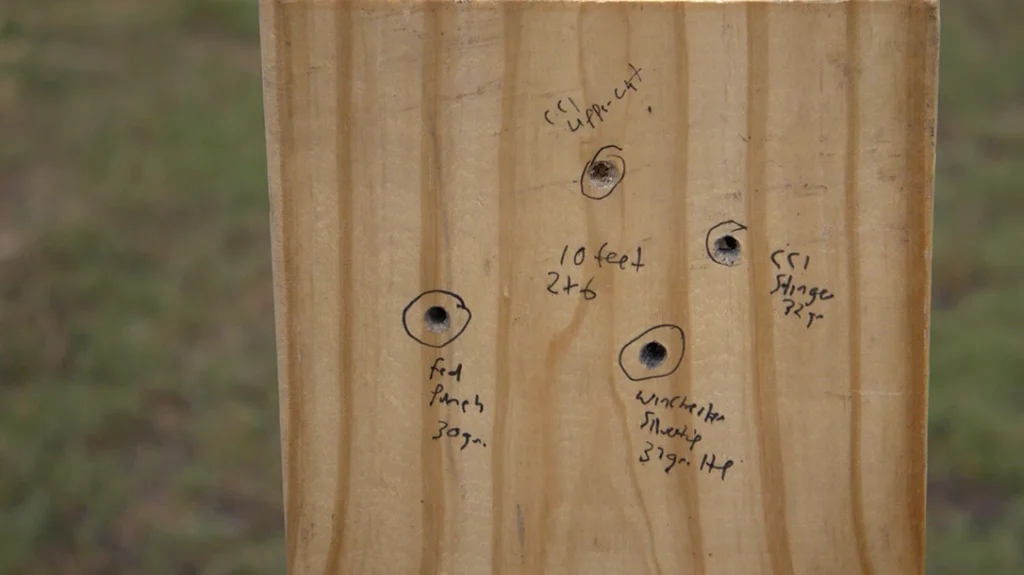
- The high-velocity Stinger produced significant flaking at exit (lots of wood fragmentation).
- The Silvertip and Uppercut punched elongated holes with little flaking, suggesting instability/tumbling and substantial energy loss.
- The Federal Punch cut a clean hole with minimal tear — think of it more like a neat impression than a splintered exit.
.22 LR Self-Defense Loads: Do or Dud?
People carry .22 handguns for many reasons. Whatever your reason, ammo selection matters more with .22 than most calibers. Certain brands and load types are far more reliable and effective than others. Even the best ammo can malfunction occasionally, so pick a handgun and a carry routine that minimize that risk.
At the light velocities and small masses typical of snubby .22 handguns, chasing expansion often backfires. The ability to achieve consistent, adequate penetration in imperfect scenarios is a more practical priority.
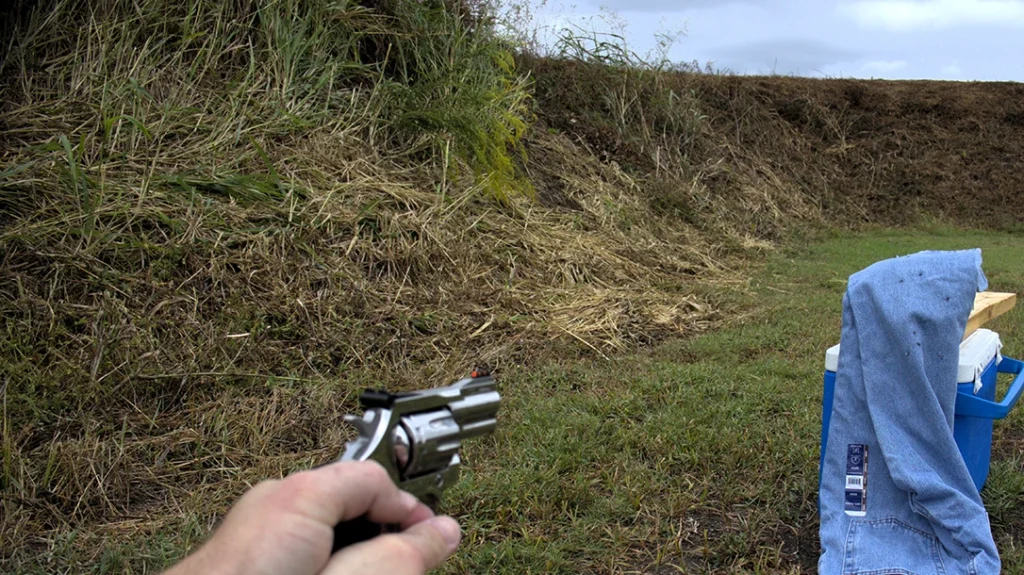
Bottom Line From Our Testing
- The Winchester Silvertip often fragments too early and loses mass quickly, limiting penetration in a defensive context.
- The CCI Uppercut’s segmented hollow point looks good on paper, but in short barrels its design can work against deeper penetration.
- The CCI Stinger remains a strong performer and is still the gold standard among commonly available defensive-suitable .22 loads in short barrels.
- The Federal Punch is a worthy successor and a very respectable option for those prioritizing penetration from snub-barrel handguns.
WHY OUR ARTICLES/REVIEWS DO NOT HAVE AFFILIATE LINKS
Affiliate links create a financial incentive for writers to promote certain products, which can lead to biased recommendations. This blurs the line between genuine advice and marketing, reducing trust in the content.
The post Ultimate .22 LR Self-Defense Ammo Roundup appeared first on Athlon Outdoors Exclusive Firearm Updates, Reviews & News.
“}]]


